We’ve a lot still to learn about our lizards. In some of the remoter parts of Aotearoa/New Zealand, new species of skinks and geckos are being discovered even today and the role of our reptiles in the wellbeing of the wider ecosystem has not been widely investigated. A recent article by Debra M. Wotton et al, published in the Journal of the Royal Society of New Zealand, reviews what we know about the role of lizards in seed dispersal.
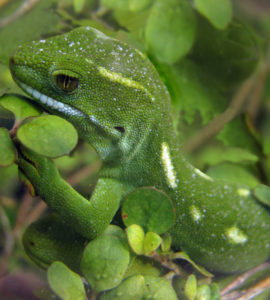
“In forests and shrubland around the world, many (23%-90%) woody species produce fleshy fruits adapted for dispersal by vertebrates. Birds and mammals have long been regarded as the only ecologically and evolutionarily significant frugivorous seed dispersers. However, the past 25 years have seen a growing awareness of the role that lizards may play. Lizard frugivory may be particularly important in island ecoystems.”
New Zealand herpetologist and all-round reptile enthusiast, the late Tony Whitaker recognised that lizards had a potential role as seed dispersers, as long ago as 1987. The statistics originally calculated by Whitaker for potential lizard numbers and seed ingestion are impressive:
“In coastal shrublands on the mainland, lizard densities can reach 10,000 animals per hectare, and lizards may consume at least 1,000,000 seeds per hectare per year, yet little is known about the fates of the seeds they ingest.”
Tony Whitaker made several observations, largely based on anecdotal evidence, which the review’s authors investigate, namely:
1. Lizards prefer white and blue fruits to other fruit colours;
2. Fruits of divaricating shrubs are eaten by lizards and not birds;
3. Lizards eat fleshy fruits in significant quantities when they co-occur;
4. Seeds ingested by lizards are undamaged and germinate as well as control seeds collected directly from plants;
5. Lizards deposit seeds in safe sites for seedling establishment (eg in rock crevices where there is a sheltered microclimate).
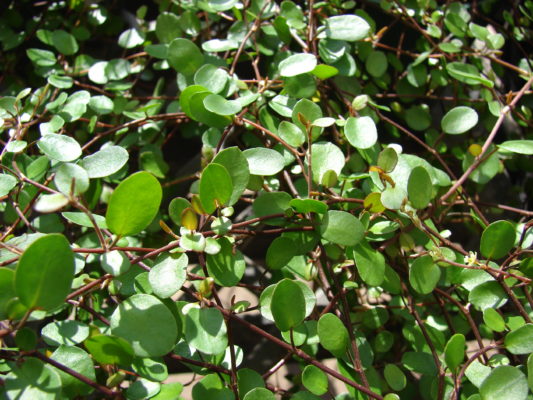
The authors carried out several investigations, including a study of whether skinks provided effective seed dispersal of several Muehlenbeckia species and another study of skink seed dispersal on Matiu-Somes Island where shrubs present in lizard habitat included Coprosma and Meuhlenbeckia species. At the Matiu-Somes Island research site, lizard pitfall traps were baited with tinned pears and monitored daily.
“All captured lizards were identified, measured and released. Lizard scats that were found in traps with lizards were collected and examined for seeds, which were cleaned, identified to species and counted. Later, in the field, we measured the distance from the trap in which the seeds were deposited to the edge of the nearest fruiting plant of the same species, to derive a conservative estimate of seed dispersal distance.”
A total of 476 skinks were captured over 1000 trap nights from 2 habitats on Matiu-Somes Island – 80 and 210 northern grass skink and 83 and 103 spotted skink, with 128 lizard scats being examined.
“The scats contained 34 identified and unidentified seeds. Seed dispersal distances ranged from 0-3.4 metres from the margin of the nearest fruiting plant. For each plant species, the mean seed dispersal distance was 1-2.4 metres.”
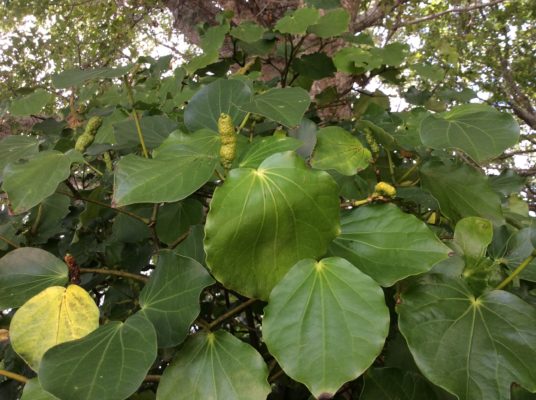
Geckos too had their time in the research spotlight, with Raukawa geckos (Woodworthia maculata) studied on Stephens Island in Cook Strait.
“We documented frugivory by Raukawa geckos and tested the effect of gecko ingestion on germination of Piper excelsum seeds. Two other gecko species (southern striped gecko and Marlborough green gecko) also occur on Stephens Island, but we did not confirm frugivory by these species.”
The researchers also reviewed other published research on New Zealand’s skinks and geckos and reported on those findings.
“To date, six gecko species in four genera and 14 skink species have been reported eating fruits. Lizards eat fruits from at least 23 native plant species in 9 families. Only 5 of these plant species are divaricating, while a further 4 species are lianes with a tangled growth form. So far, lizards have been recorded eating fruits of only 1 non-native species (Phytolacca octandra, ‘inkweed’).”
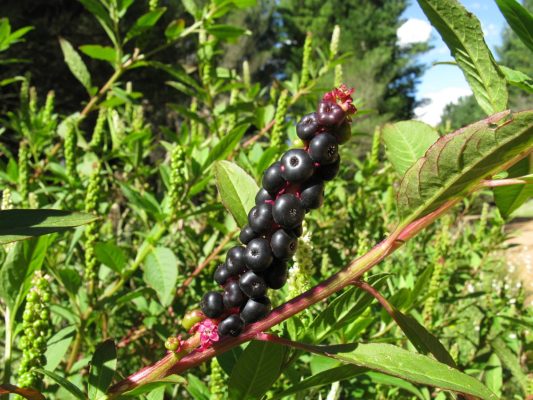
Lizards would seem to have a colour preference too, as first hypothesised by Tony Whitaker.
“Nearly half (47.8%, 11 species) of the 23 species eaten by lizards have white-blue fruits, though white-blue fruits comprise only 21.5% of the fleshy-fruited flora. Evidence suggests that New Zealand lizards prefer white and blue fruits to other fruit colours. This colour preference may be unique to New Zealand.”
While birds also eat fruit, they don’t always feed on the same fruits as lizards, although there is some overlap.
“Of the 23 native species whose fruits are eaten by lizards, only 17 have been recorded as eaten by birds.”
Lizards are small – but at high lizard densities, they can eat a significant amount of fruit between them.
“At high lizard densities on Mana Island, W. maculata removed at least 47% and up to 93% of Coprosma propinqua fruits when birds were excluded. In Canterbury subalpine shrublands, lizards removed about half of the fruits removed by all frugivores (birds, mammals and lizards), despite their low abundance.”
The quality of the seeds dispersed by lizards was also found to be high, as were some of the dispersal distances measured.
“Coprosma propinqua seeds ingested by W. maculata germinated as well (72%) as hand-cleaned seeds (67%) and seeds in whole fruits (77%). Lizards disperse seeds of several plant species up to at least 12 metres, enabling seeds to escape from the parent plant. Longer dispersal distances are possible but can be difficult to measure due to the proximity of conspecific plants.”
Native lizards may have a significant seed dispersal role over a wide range of habitats.
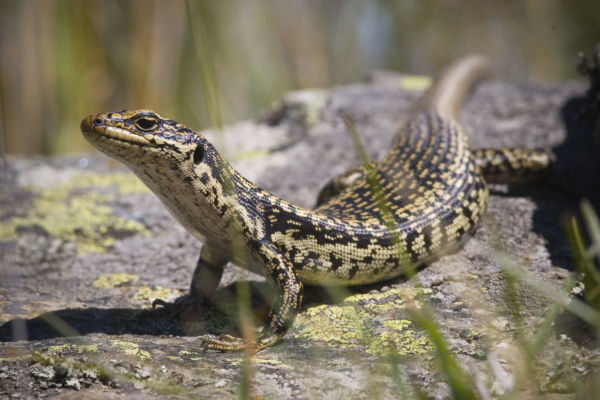
“Lizard frugivory has been recorded in shrublands, grasslands, shingle beaches and forests, and from lowland to subalpine elevations. Not surprisingly, many of the lizard frugivory observations are from offshore islands, which often lack introduced mammalian predators and have much higher lizard densities than the mainland.”
Interestingly, their food preferences may even have influenced the evolution of New Zealand plant species.
“White-blue fruits and small leaves have evolved independently several times in Comprosma, which may indicate selection for these traits by lizards. Tree weta also prefer blue and white fruits and may have similarly influenced plant evolution in New Zealand. However, weta destroy a much greater proportion of ingested seeds than lizards.”
The full article is published in the Journal of the Royal Society of New Zealand, but only the abstract is freely available online to non-subscribers. Public libraries may have physical copies of the journal or an online subscription.
The role of lizards as seed dispersers in New Zealand (2016)

